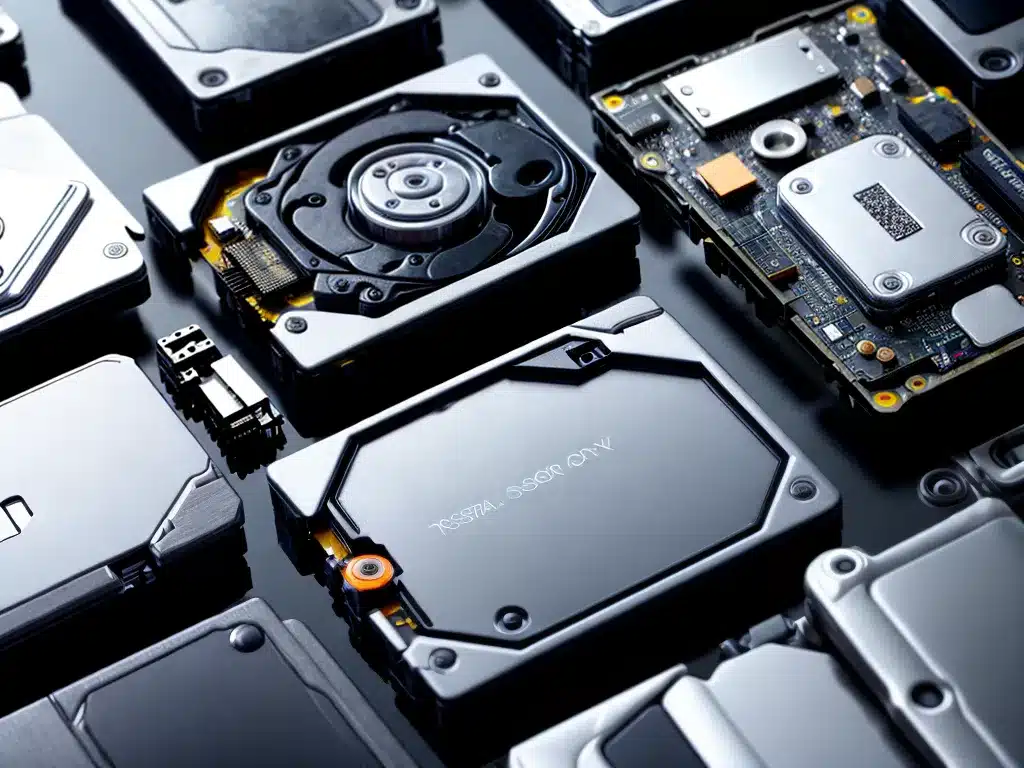
Solid state drives (SSDs) are becoming increasingly common in computers and other devices. However, like all storage devices, SSDs can and do fail. When an SSD fails, it often results in complete data loss if the data is not backed up elsewhere. Fortunately, there are several options for attempting to recover data from a failed SSD in 2024.
Software-Based Data Recovery
One option for recovering data from a failed SSD is to use data recovery software. There are many software products on the market, both free and paid, that can scan SSDs and attempt to recover deleted or lost files. Some popular software options include:
-
Recuva – A free Windows utility that can recover deleted or lost files from hard drives and SSDs. Recuva has different scan modes for finding more files.
-
EaseUS Data Recovery Wizard – A more advanced paid software with features like corrupted file recovery and quick scan modes. Works on Windows and Mac.
-
Stellar Data Recovery – Designed specifically for recovering data from SSDs and flash media drives across platforms. Has advanced scan options.
-
R-Studio – A comprehensive recovery software for Windows and Mac capable of rebuilding corrupted RAID arrays and file systems.
The advantage of software recovery is that it’s non-invasive and can be attempted on the failed SSD without altering it. However, results vary widely based on the severity of SSD failure and file system corruption.
Professional Data Recovery Service
For difficult cases of SSD failure where software cannot recover the data, a professional data recovery service may be able to help extract the data. These services have access to advanced tools and techniques for reading data off the SSD chips directly.
Some things professional SSD data recovery can do:
- Bypass damaged controllers and interface electronics
- Directly read NAND flash memory chips using a chip reader
- Rebuild highly corrupted TRIM-affected file systems
- Repair SSDs with electrical damage
Professional data recovery has a higher success rate for catastrophic SSD failures but is expensive. Costs range from $300 to $2000+ depending on failure complexity. Still, it can be worth it for irreplaceable data.
When choosing a data recovery service, look for experience with SSDs specifically and a high success rate. DriveSavers and Gillware are two reputable options.
DIY Disassembly and Chip Reading
As an alternative to professional recovery, some tech-savvy users attempt DIY data recovery on dead SSDs. This involves:
- Disassembling the SSD case to access the circuit board
- Identifying the NAND flash memory chips
- Desoldering the chips from the board
- Reading the raw flash data using a NAND flash reader/programmer device
Pros:
- Full control over the data recovery process
- Lower cost than professional recovery
Cons:
- Requires advanced technical skill with electronics
- High likelihood of irreparable damage if done improperly
- No guarantee data can be successfully reconstructed from raw NAND flash
So DIY SSD data recovery is only for the brave and technically skilled! Use as a last resort before discarding a dead SSD.
Data Recovery Tips for SSDs
To maximize chances of data recovery from a failed SSD, there are some best practices to follow:
-
Have a good backup – This is the #1 rule. Back up important data regularly so it exists off the SSD.
-
Avoid continued use of a failing SSD – Odd behaviors like crashes and slowdowns can indicate an SSD is about to fail. Stop using the drive immediately to avoid data loss.
-
Don’t initialize or reformat the SSD – This overwrites the file system metadata needed for recovery.
-
Use write protection if possible – For example, by making the SSD read-only in BIOS or using hardware write blockers. This prevents any further data loss.
-
Choose recovery methods carefully – Software should be tried before invasive hardware methods. Get professional help for difficult cases.
No data recovery option is guaranteed to work if an SSD fails. But following best practices gives peace of mind that important data has the best chance to be recovered, even as far out as 2024 and beyond.












